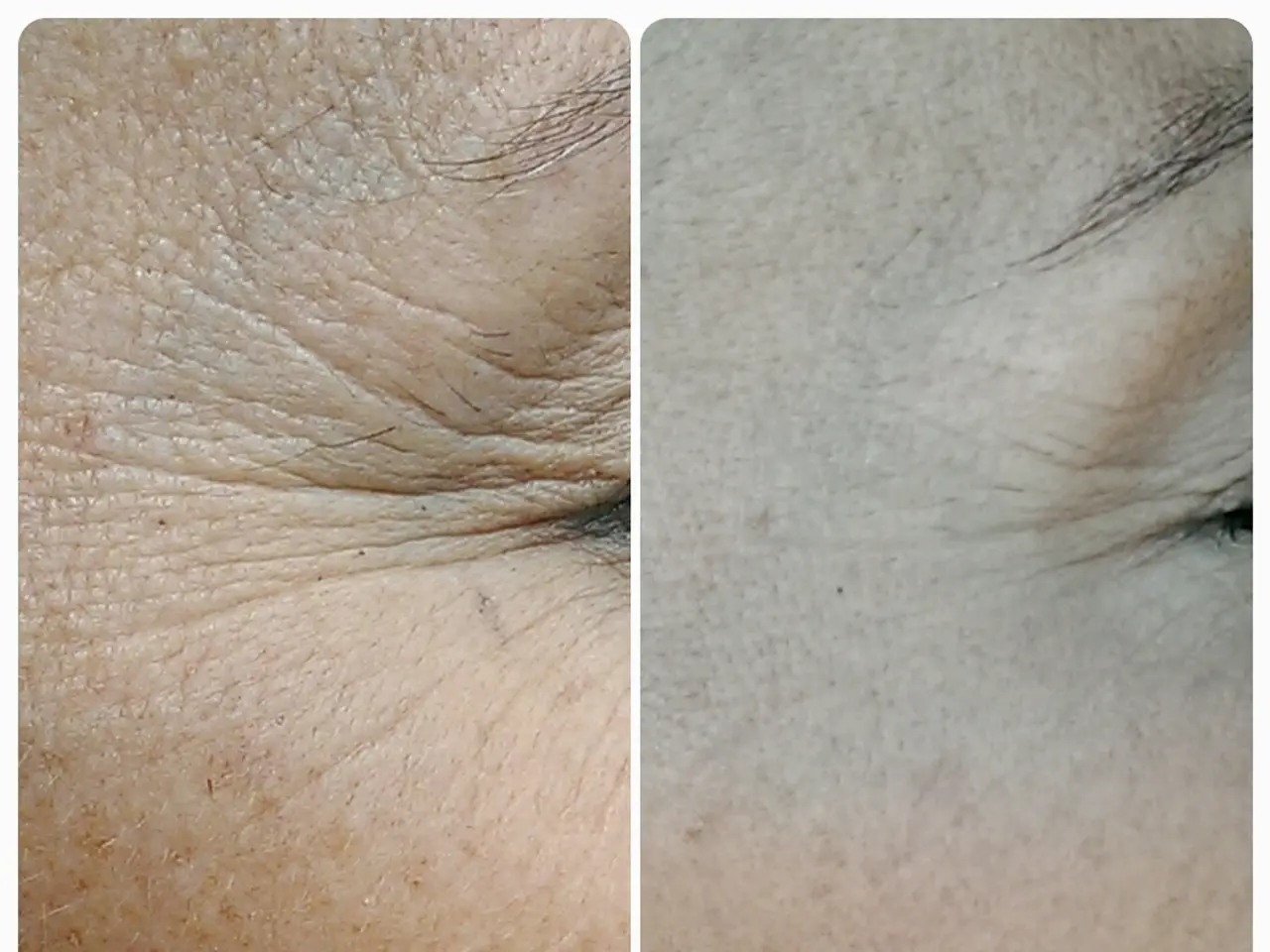Treatments for hidradenitis suppurativa through biological agents: Understanding their mechanisms
In the ongoing quest to manage Hidradenitis Suppurativa (HS), a chronic inflammatory skin condition, biologics have emerged as a potential life-changing therapy for some individuals. However, these medications, which work by suppressing the immune system, come with risks that need to be weighed against their potential benefits.
Hidradenitis Suppurativa (HS) is characterised by painful breakouts of pimple-like bumps, nodules, and boils, often appearing in areas where skin rubs together such as the armpits and groin. The exact cause of HS remains unknown, but an abnormal immune response may play a role.
One biologic that has been approved by the Food and Drug Administration (FDA) to treat HS is Humira (adalimumab), a TNF-a inhibitor that blocks a specific protein involved in inflammation. In Phase III clinical trials, approximately 40-60% of people with HS who received Humira showed considerable improvements in symptoms.
Another biologic, Ustekinumab (Stelara), inhibits IL-12 and IL-23 and may be helpful in treating certain cases of HS. In a Phase II trial, approximately 47% of people with HS who received Stelara showed signs of a clinical response.
However, it's important to note that biologics can increase the risk of infections, and in rare cases, people taking Humira have developed serious infections, lymphoma (a type of cancer affecting the lymph system), serious allergic reactions, demyelinating diseases, lupus-like syndromes, low blood count, heart failure, and other types of biologics may also cause side effects.
When considering the use of biologics to treat HS, several factors should be taken into account. Patients with liver, kidney, or immune system issues may need alternative treatments due to potential risks associated with biologics. A thorough medical history and physical examination are crucial before prescribing a biologic to a patient, and discussions about the risks and expected benefits are essential.
Lifestyle modifications, such as dietary changes, smoking cessation, and regular exercise, can complement treatment and improve outcomes. Access to healthcare services, insurance coverage, and specialist referrals may also impact the availability of biologics.
The effectiveness of biologics varies among patients, with some experiencing significant improvement while others may not respond as well. Regular monitoring is crucial to manage potential side effects and to assess the effectiveness of the treatment. Other treatments, including antibiotics and surgery, might be more appropriate for certain patients based on their specific circumstances.
While Humira is the only FDA-approved biologic for HS, clinical trials are underway to study the use of other biologics for HS, including secukinumab (an IL-17 inhibitor) and guselkumab (an IL-23 inhibitor).
By carefully evaluating these factors, healthcare professionals and patients can make informed decisions about the use of biologics in treating HS. It's crucial to remember that each individual's situation is unique, and the best course of treatment will depend on various factors.
When considering any medication, it's essential to discuss the potential risks and benefits with your healthcare provider to make the best decision for your health.
In the realm of science and medical-conditions like Hidradenitis Suppurativa (HS), skin-care therapies and treatments have gained significant attention, particularly biologics. These medical interventions, often used to manage HS, have shown potential in improving symptoms for some individuals, such as Humira (adalimumab) and Ustekinumab (Stelara). However, it is important to consider the risks associated with these therapies, including increased risk of infections and side effects, before making a decision for health-and-wellness. A thorough discussion regarding individuals' medical history, potential risks, and expected benefits is crucial in this context.




